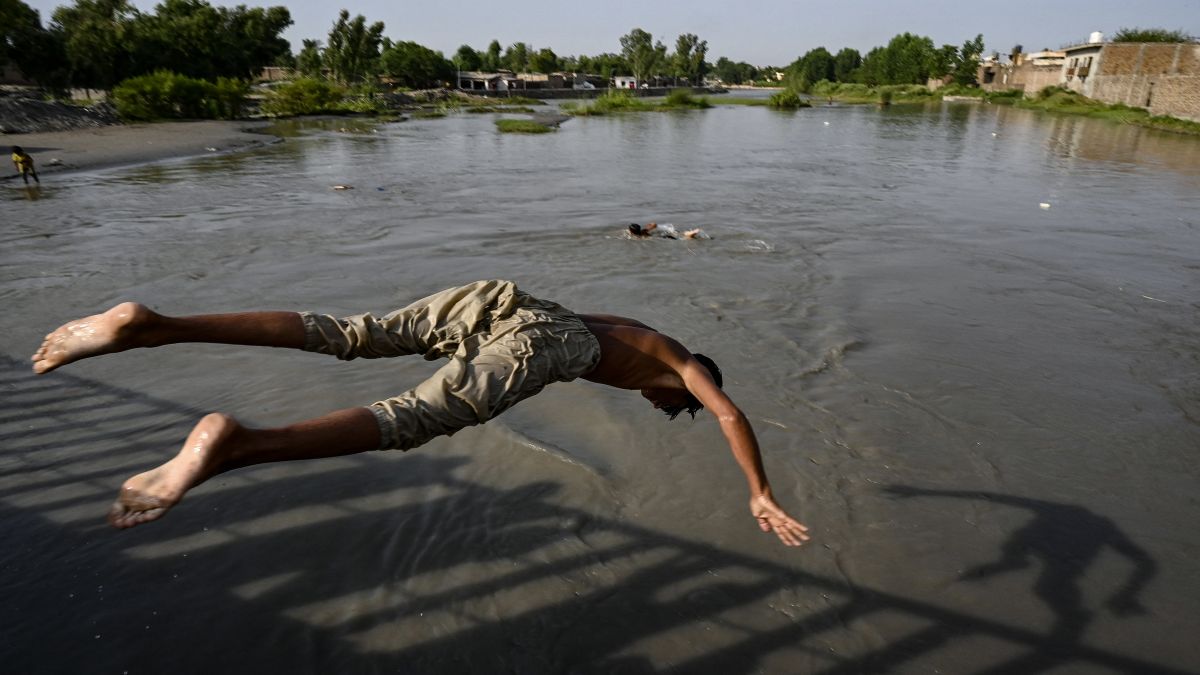Is there a new water brewing?
New Delhi has extended its support to Afghanistan to build a dam over the Kunar River, which it shares with Pakistan, at a time when the two nations are at loggerheads.
The announcement from India’s Ministry of External Affairs comes days after the Taliban-led Afghanistan announced its plans of building dams and restricting water to Pakistan — similar to India’s Indus Waters move following the Pahalgam attack.
If you are confused about what’s going on, we explain it all — from the dam that Afghanistan wants to build to India’s support for it and how it will affect Pakistan.
Pakistan-Afghanistan land tensions turn into a water war
Amid the latest border tensions between Pakistan and Afghanistan, the Taliban-led government borrowed from India’s playbook to restrict water to Islamabad, announcing that it would be building dams across the Kunar River “as soon as possible”. The order came from the ruling Taliban’s Supreme Leader Mawlawi Hibatullah Akhundzada, acting Water Minister Mullah Abdul Latif Mansoor said on X earlier this month.
In his post, the minister said, “Afghans have the right to manage their own water” and that construction would be led by domestic firms rather than foreign.
For those who don’t know, the Kunar River, which runs for 5,000 kilometres, originates from the Hindu Kush mountains in Chitral district of Pakistan’s Khyber Pakhtunkhwa province. It then flows south into Afghanistan, running through the Kunar and Nangarhar provinces, before emptying into the Kabul River.
These combined waters then flow back into Pakistan. It is one of the largest to flow into Pakistan and just like the Indus, it is a key source of irrigation, drinking water and hydroelectric power, specifically for the Khyber Pakhtunkhwa region.
The Taliban’s decision to dam the river comes amid the violent clashes between the two nations at its boundary over the past few weeks. Both sides claim to have caused heavy casualties in these cross-border firings.
Notably, Afghanistan’s move is similar to India’s actions in the aftermath of the Pahalgam attack in April. New Delhi had announced that it was putting the Indus Waters Treaty in abeyance following the heinous incident, which claimed the lives of 26 people, with Prime Minister Narendra Modi saying that the agreement was “unjust and one-sided” and that “blood and water cannot flow together.”
So, how India fits into Afghanistan’s dam plan
On Thursday, India came out in support of Afghanistan’s plan to build a dam on the Kunar River, saying it stands ready to support Kabul in sustainable water management, including on hydroelectric projects.
This development came during the Ministry of External Affairs’ press briefing when spokesperson Randhir Jaiswal was asked if India would consider building or funding a dam along the Kunar.
Jaiswal noted that said there’s a history of cooperation between India and Afghanistan on such issues and that the joint statement issued during Afghan Foreign Minister Amir Khan Muttaqi’s visit to New Delhi “clearly emphasises that India stands ready to support all efforts of Afghanistan that are directed towards sustainable management of water resources, including hydroelectric projects.”
“You also would know that between the two countries, there has been a long history of cooperation on water matters. The Salma Dam, for example, is a perfect example of this cooperation,” he added.
The Salma Dam mentioned by Jaiswal, built in Afghanistan’s in Herat’s Cheshte Sharif district, is one of the largest dams in the country and provides irrigation water and electricity to thousands of families in the province.
As it was funded by India, it is also known as the Afghan-India Friendship Dam. The plant has a power generation capacity of 42 MW and is also a major irrigation resource that can irrigate 75,000 hectares of agricultural land. It was completed and inaugurated by PM Modi in 2016 after it overcame many hurdles, including its remote location.
In furtherance to the issue, Jaiswal also noted that Pakistan was infuriated with Afghanistan exercising sovereignty over its own territories. “Pakistan seems to think that it has the right to practice cross-border terrorism with impunity. Its neighbours find it unacceptable,” he said, adding, “India remains fully committed to the sovereignty, territorial integrity and independence of Afghanistan.”
A dam concern for Pakistan
The Taliban’s decision to dam the Kunar River is a huge concern for Pakistan. Should Kabul go ahead and dam it, it will restrict the flow of the river’s water, which is crucial to the Pakistani people.
In Pakistan, this river and its tributaries are indispensable for meeting the drinking water and sanitation needs of the more than two million residents of Peshawar city. Moreover, Pakistan receives an average of 17 million acre-feet (MAF) of water each year from the Kunar River. But if Afghanistan does build a dam on it, it could restrict Pakistan’s inflow by an estimated three MAF.
Officials also note that it the Kabul River is of importance for the early Kharif crop period from April 1 to June 10. This is because at this point of time, the Tarbela Dam hits a dead level and the Indus River carries minimal storage.
Moreover, it will become a double water whammy for Pakistan — facing squeeze on its rivers from India in the east and Afghanistan in the west.
New Delhi, in the aftermath of the Pahalgam terror attack, put the Indus Waters Treaty in abeyance, which has had already had a negative impact on Islamabad. In June, a Pakistan report indicated a 13.3 per cent year-on-year shortfall in water drawn from the Indus River System — and supplied to already water-starved farms in the Punjab province — following India halting a 1960 water-sharing treaty.
The report by Pakistan’s Indus River System Authority said 124,500 cusecs were released from the Indus basin to dams on June 5, compared to the nearly 144,000 cusecs this time last year. The shortfall, experts said, will affect the sowing of Kharif, or monsoonal, crops. Monsoon rains could improve this supply but, at least till then, crops in Pak’s Punjab province are at stake.
It seems that Pakistan may soon be left high and dry. It remains to be seen if they can get out of this situation.
With inputs from agencies


)

)
)
)
)
)
)
)
)



